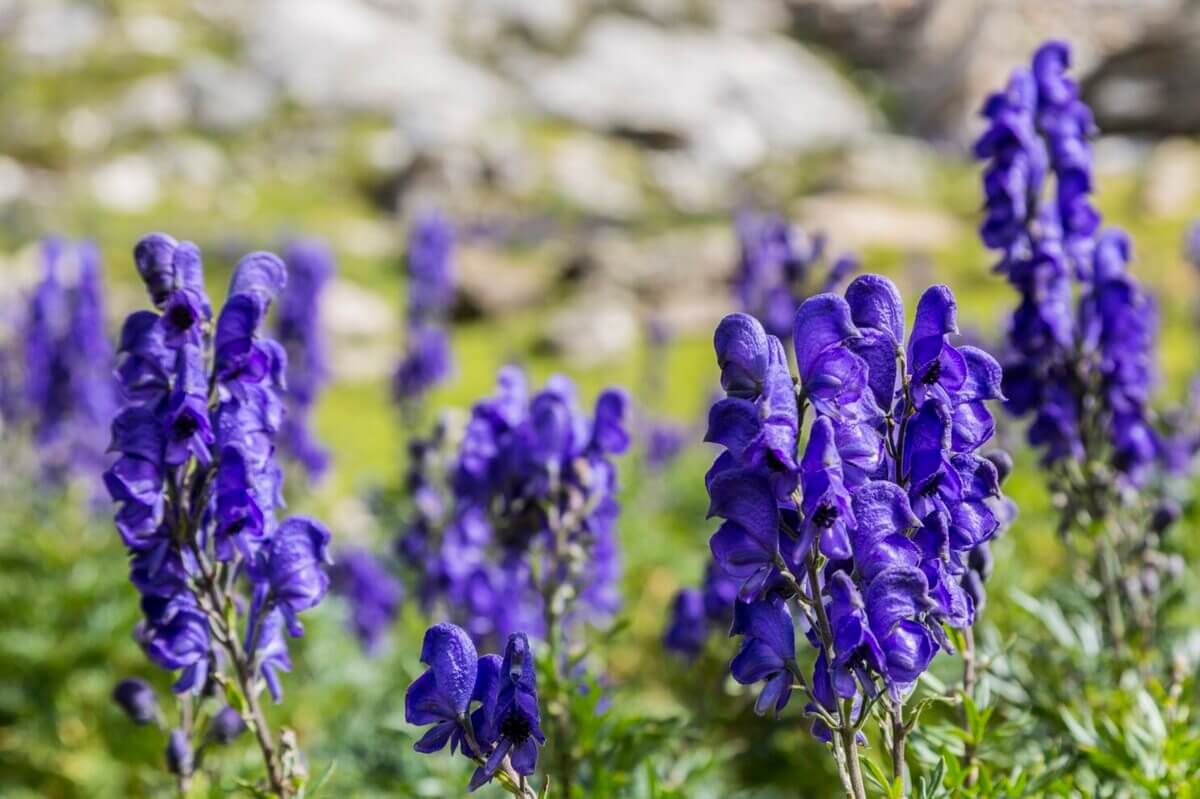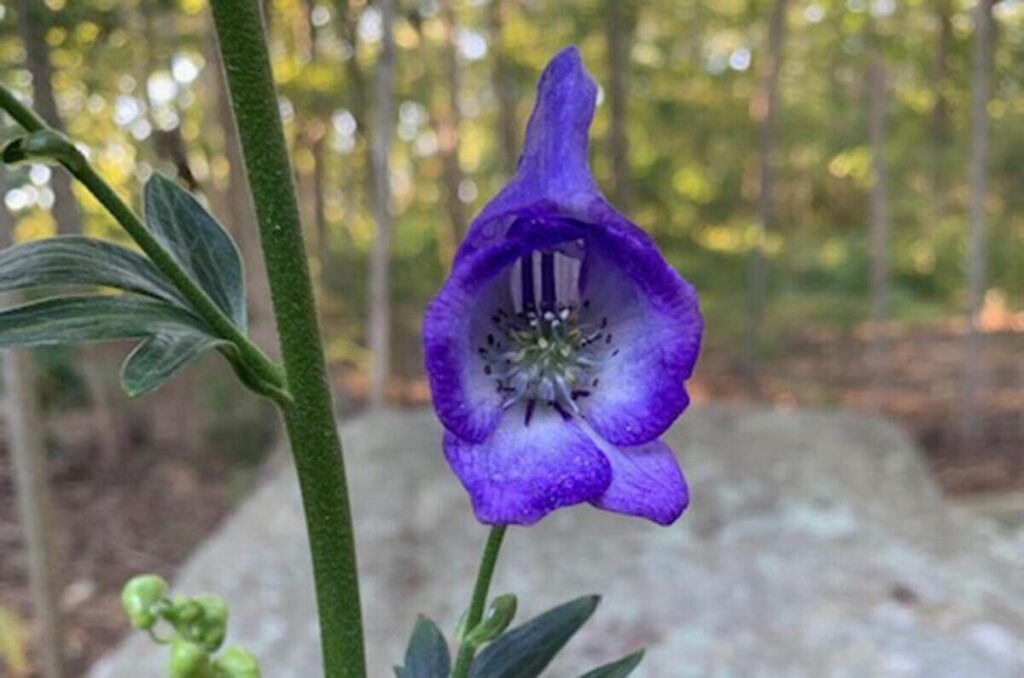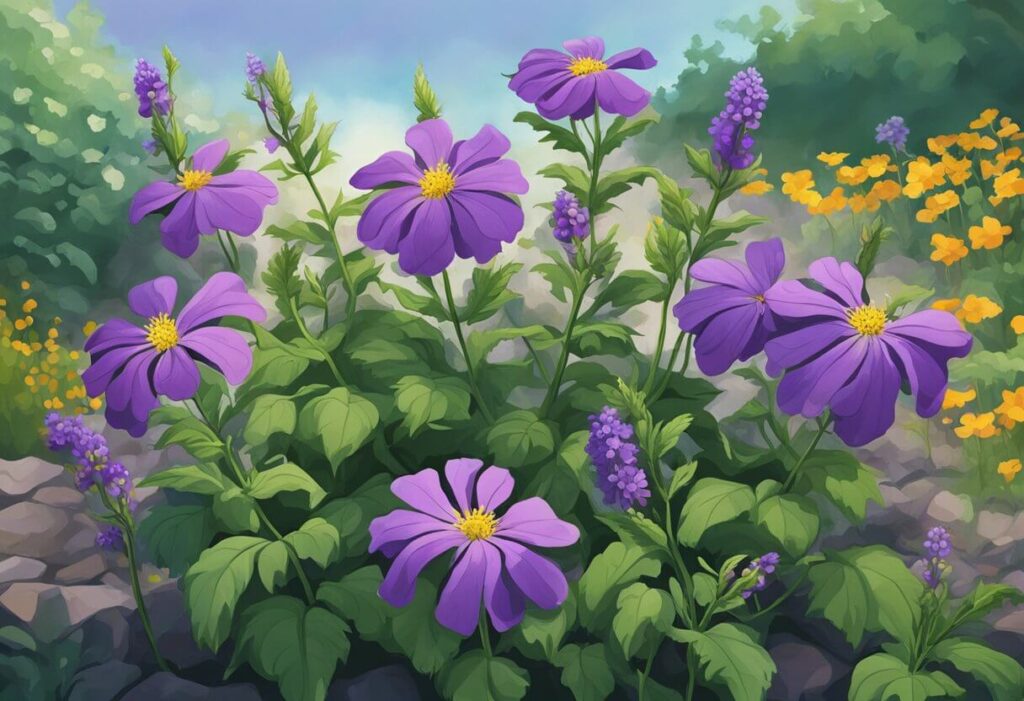Is Growing Lethal Wolfsbane Flower in Your Garden Legal?

For centuries, the striking purple flowers of the wolfsbane plant have sparked intrigue and tales of the supernatural. This botanical specimen, scientifically termed Aconitum napellus, carries a storied reputation as a mythical protector against werewolves and vampires. Yet behind the lore lingers a far more perilous truth – wolfsbane is among the most toxic plants on Earth.
With such lethality coiled within its leaves and roots, an inevitable question arises in both mythological and legal realms: is cultivating wolfsbane permitted? Can the average gardener legally grow this enigmatic flowering plant known to harbor deadly poison?
The short answer: In most regions, growing wolfsbane is not outright illegal. However, legal repercussions could follow in areas where handling procedures fail to adequately protect people, pets and local ecosystems from the extreme toxicity. General safety and environmental regulations may also apply depending on the jurisdiction.
This article will trace wolfsbane’s roots from ancient folklore to modern backyard gardens, analyzing the intricacies of its legal status and the importance of safe handling for this potent poisonous plant. We’ll water the growing questions around what exactly wolfsbane is, why toxicity levels drive concerns over cultivation, and how both historical allure and ecological cautions color its controversial yet captivating existence in today’s world.
What Exactly is Wolfsbane?
Aconitum napellus belongs to the Ranunculaceae family of around 400 flowering plant species including buttercups, clematis, and anemones. This perennial herb with lush green lobed leaves and striking purple flowers emerges from tuberous roots. It spreads upward on straight hollow stems, reaching heights exceeding 1 meter when fully grown.
The blossoms boast a signature helmet-like shape and typically flourish for several weeks in late summer or early fall. Various Aconitum species populate mountain meadows and forested areas across Europe, Asia and North America.
Beyond botanical characteristics, wolfsbane’s identity is enriched by the mysterious legends trailing its existence through cultures worldwide. Tales of its supernatural abilities, from warding off werewolves to eliminating vampires, earned wolfsbane monikers like monkshood and Friar’s Cap.
The genus name Aconitum even stems from Greek mythology, linked to a monster whose deadly saliva was thought to spawn poisonous aconite plants. Wolfsbane’s fame traces back millennia, infiltrating ancient rituals and healing traditions before its toxicity was fully understood.
The Extreme and Deadly Toxicity of Wolfsbane
While wolfsbane’s rich narrative built an aura of magical protection, the plant harbors a far darker reality in potent toxins permeating its every root, leaf and petal.
The most eminent poison lurking within wolfsbane is aconitine, an alkaloid compound easily absorbed through the skin. When ingested, this neurotoxin targets sodium channels in the heart and central nervous system. Even minor exposure can trigger severe symptoms.
As little as two to five milligrams of aconitine constitutes a lethal adult dose. To put that miniscule margin in perspective – a mere three to seven droplets could end a human life. Consider it among the most poisonous plants in Europe.
Historical medicinal use attempted to take advantage of its analgesic and anti-inflammatory properties. However, the lack of an antidote and its potency rendering it near impossible to dilute into non-toxic levels essentially eliminated wolfsbane’s role in modern pharmacology.
Yet accidental and intentional poisoning persists due to the plant’s easy availability. Aconitum species contribute to a substantial portion of toxic plant exposures in Europe and Asia. Unwise ingestion continues claiming lives.
Without rapid treatment, symptoms manifest within minutes to hours of exposure. Early signs include burning, tingling and numbness at contact points. Ingesting wolfsbane triggers severe gastrointestinal distress – nausea, diarrhea, cramping and vomiting.
As the toxins infiltrate the circulatory system, they wreak further havoc by slowing the heart rate and potentially inducing fatal arrhythmias. Muscle weakness, low blood pressure, breathing issues, paralysis and convulsions precede death in extreme cases.
Ancient and Contemporary Uses of Wolfsbane
In contrast to its modern reputation as poisonous gardening peril, wolfsbane’s use traces back thousands of years as a hunting aid, narcotic tonic, poison and treatment for various ailments. Tales of its powers fueled widespread cultivation and collection across Europe and Asia.
Ancient Greeks and Romans exploited wolfsbane as a poison by soaking arrow tips in extracted aconitine. Hunting prey or battling enemies proved more efficacious with lethal toxins quickly immobilizing the target. Historical records even depict employing wolfsbane extracts to execute prisoners.
Beyond weaponizing its toxicity, traditional Chinese medicine hailed it as a treatment for conditions like arthritis, epilepsy and heart disease. Homeopathic approaches attempted to temper its potency by relying on incredibly diluted extracts. Yet its therapeutic window has proven far too narrow for safe or reliable medical utility.
While monkshood’s efficacy against werewolves remains questionable, its current horticultural homes prove far less menacing. Today, gardeners cultivate wolfsbane more for its visual appeal than its mythological prowess. With proper precautions against accidental ingestion, its blossoms infuse modern flowerbeds with intrigue and exotic allure.
However, the plant’s potential as an insidious poison endures. Concerns occasionally emerge around utilizing extracted aconitine in criminal plots or acts of terrorism. So questions linger regarding responsible regulation of this pretty but treacherous garden resident.
Is Cultivating Wolfsbane Legal? What Regulations Apply?

Given centuries worth of notoriety as a poison and continual unintended exposures causing illness and death, is growing wolfsbane legally prohibited?
Surprisingly, legislation rarely restricts residents from cultivating Aconitum napellus and related species. Home gardeners are generally free to grow monkshood without facing criminal repercussions. You’ll easily find wolfsbane bulbs or seeds available from common plant retailers.
However, legal exemption from growing wolfsbane does not equal safety or immunity from liability. General duty laws obligate plant owners to constrain risk associated with toxic flora. Permitting ingestion by humans or pets breaches that responsibility. Those found criminally negligent for poisoning incidents face prosecution.
Further regulation surrounds handling and disposing of plant waste. Composting or discarding wolfsbane without proper precautions violates hazardous waste disposal rules in some municipalities. That forces home growers to carefully contain and repeatedly label aconite waste until facilities can permanently detoxify refuse.
Stricter wolfsbane oversight often depends on location. Conservation groups declare the species invasive in certain habitats. Introducing non-native plants threats local flora.
Soil transported from other regions may harbor tiny aconite root fragments that spawn infestations. Such environmental concerns motivate banning wolfsbane import and distribution across vulnerable ecosystems. New home developments in those areas must eradicate monkshood before construction.
Accidental and Intentional Aconite Poisoning Cases
Laws cannot always constrain deadly plants when curiosity and carelessness obstruct caution. A tragic timeline of accidental and intentional wolfsbane poisonings demonstrates what happens when toxicity meets misguided motivations.
Uninformed homeowners occasionally plant vibrant monkshood in gardens without realizing every portion seethes with poison. When curious family members or neighbors ingest parts of the deceptive plant, aconitine brings on a disturbance of the digestive tract along with system-wide disruption.
Wild tubers resembling carrots or sweet potatoes harbor analogous toxicity. Foragers lured in by the wrong root face similar outcomes.
Inevitably, intentional misuse also occurs. Natural compounds concentrate nature’s potency, often to perilous degrees without proper expertise. Risk-blind experimentation gives way to toxicity.
A 21-year old herbal enthusiast steeping homemade wolfsbane tea from his backyard plot rapidly succumbed to severe arrhythmias and near-deadly numbness. Another man narrowly survived accidental skin contact with aconite residue left poorly contained after using it to poison invasive fish.
Renegades obtaining wolfsbane through agricultural supply channels have weaponized extracts for homicidal and political aims. The toxin evades detection during autopsy. One killer nearly got away with gradually poisoning a romantic rival with monkshood-laced treats.
Whether arising from naive error or malicious intent, wolfsbane’s long-standing notoriety as one of Earth’s deadliest plants remains well earned. Those who disregard its toxicity inevitably face grave outcomes absent rapid medical intervention.
What Happens If You Are Exposed to or Ingest Wolfsbane?

In an era of surging interest in home gardening, foraging and herbal supplements, the perils of plants like wolfsbane justify awareness of what actually transpires within a poisoning victim’s body – and how little doctors can intervene beyond attempting to stabilize the cascading chaos.
If you ever suspect wolfsbane poisoning from exposure to any potion of the plant, immediately call emergency services or poison control. While treatments only marginally improve dire prognoses, rapid reaction and symptom management give victims their best odds of survival.
Upon ingestion, the highly concentrated aconitine toxin permeates digestive tissues and enters the bloodstream within minutes. Severe toxicity unfolds through multiple mechanisms of action.
The poison basically paralyzes nerve signals regulating critical involuntary muscles like the heart and diaphragm. Arrhythmia and depressed breathing soon manifest dangerously. Simultaneously, non-life sustaining systems go haywire – nausea, low blood pressure, hyper-sweating. The multi-front bodily assault ultimately drives respiratory or cardiac failure.
Attempted treatments focus on stabilizing heart rhythms and breathing. But no direct antidote exists to counteract the toxin’s overwhelming effects. Supportive care including CPR, vasopressors, anti-arrhythmic drugs or pacemakers aim to buy time for elimination of remaining toxin from the body.
Overall, mortality rates approach 5.5% in aconite poisonings. And survivors face lengthy recoveries and possible permanent organ damage depending on exposure magnitude. Clearly cultivation of wolfsbane warrants profound caution and respect for its infamous potency.
Growing Wolfsbane Safely at Home – Is It Possible?
Given copious accounts of fingers and lives lost to a seemingly harmless flowering perennial, can wolfsbane realistically integrate into backyard plots without posing prohibitive risk?
With exhaustive precautions in place, growing modest amounts of wolfsbane is feasible. But the preparations and perpetual vigilance required to safeguard loved ones land well beyond the devotion of casual gardeners.
If willing to embrace the challenge, confining wolfsbane to garden beds surrounded by safety signage and fencing provides an initial barrier against accidental contact. Search for thorny cultivars to discourage nibbles. Site beds distant from areas frequented by kids and pets.
Always wear waterproof gloves and long sleeves when handling monkshood. Wash tools and hands thoroughly post-contact. Composting or discarding plant waste risks residual toxin exposure, so deeply bury or burn trimmings instead. Mark the disposal location.
Further tips to enhance safety include periodically spraying beds with a harmless dye. Vivid colors alert family that hands-off rules apply. Seek out less potent Aconitum species and cultivars. Finally, ensure everyone understands that while visually stunning, no part of wolfsbane can be consumed – ever!
Proper Identification and Safe Disposal of Wolfsbane

Ensuring the coveted purple plumes brightening your garden bed actually emanate from wolfsbane – not foxglove or larkspur crossing the line from beautiful to deadly – tops the list for identification musts.
Confusing monkshood with one of its close doppelgangers contributes to avoidable poisonings annually. Compare leaf shapes and alignments along with detailed flower structures before finalizing labels. If uncertain, consult an horticulturist before purchase or propagation.
On the opposite end of cultivation, properly handling spent wolfsbane materials prevents perpetuating toxicity beyond garden boundaries. Failing to securely dispose of aconite waste poses major risks.
As covered in safe growing tips, immediately incinerating or burying trimmings is optimal for deactivating lingering toxins. Alternately, seal discarded roots or foliage in clearly labeled heavy duty bags for transport to waste management facilities.
Follow regional hazardous material disposal regulations whether utilizing household methods or formal channels. Locate compost piles distant from edible gardens and recreation areas regardless of composition. Accidentally reviving discarded wolfsbane can spawn ecological and safety nightmares.
The Ecological Impact and Invasiveness of Wolfsbane
While wolfsbane’s mythological legacy captivates imaginations, its ecological reputation earns far more chilling reviews. When introduced into non-native habitats, Aconitum species pose serious threats as invasive colonizers.
The combination of toxic defenses and runway growth rates allows wolfsbane to overwhelm local plant communities. Native wildlife and ecosystems often lack biological controls to slow the crush of floral invaders.
Dense swaths of wolfsbane crowd out indigenous vegetation, destroying vital habitat and food sources. Deer or rodents poisoning risk increases with their food options diminished. Humans also confront higher toxin exposure threats from proliferating a harmful species.
In the United States, purple loosestrife, reed canary grass and the infamous kudzu vine rank among the worst botanical usurpers. All were initially imported as ornamentals before explosive spreading disrupted regional biodiversity.
While not currently ranked among America’s most problematic plants, introduced aconite species contribute to noxious weed issues along the Pacific coastline and areas of the Southern Appalachians. Ongoing monitoring tracks their invasion potential.
Wolfsbane legalization requires coordinated prevention work across jurisdictions vulnerable to floral invaders. From import bans to eradication mandates, containing biological threats hinges on decisive conservation action before they metastasize uncontrollably.
Conclusion
The enduring allure of wolfsbane across generations shows no signs of wilting, even as the truly chilling side effects of interacting with this toxic temptress come to light with troubling regularity. While rarely outright illegal thanks to horticultural appeal, embracing monkshood cultivation absent extreme safety practices courts tragedy.
Those willing to tackle the demands of building genuine safeguards around wolfsbane may succeed in responsibly enjoying its exotic beauty without contributing to poisoning or invasion risks. But casual gardeners often plant disaster by underestimating what it takes to temper toxicity.
In a sense, wolfsbane itself remains an unreformed danger – thrilling, yet impervious to eradicating its deadly essence. Perhaps that inherent duplicity spawned tales of shapeshifting beasts foiled by the only poison sufficient to also fell humans.
Regardless of mythical madness, respect for the plant’s enduring power and threats now yield an updated moral: Banish the monsters or they may devour us all. With wolfsbane holding court in our gardens, that warning applies all too literally should we forget exactly what we’re dealing with in our quest for horticultural excitement.






